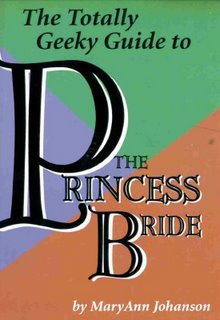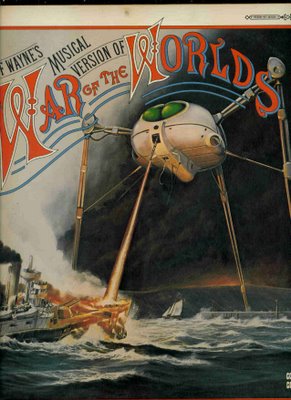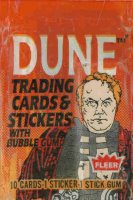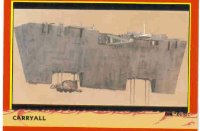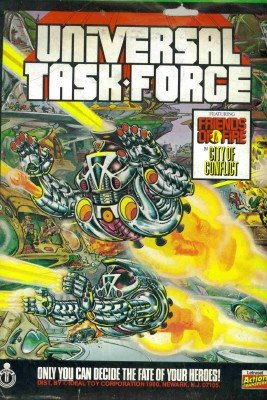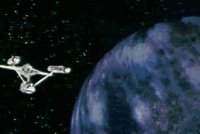Hollywood filmmakers have often found themselves in a quandary over the sub-genre of superheroes. Either the men and women behind film and TV comic-book adaptations and new superhero-style ventures rely on the popular "BIFF! BAM! ZOW!"-style of production that were part and parcel of the Age of Camp (Batman [1966]) or - as in the recent years of "The Dark Age" - the producers have tried so hard to take their costumed heroes and subject matter seriously that they have created broody, angsty, humorless night-time spectacles that all inevitably rely on the dialogue: "I made you? You made me!" Or at least a corollary, anyway. There have been so many "dark" superheroes of late, that some of the movies (particularly Elektra and Daredevil) have played like humorless parodies of the form. The real super-villains in these films are the over-utilized cliches...
Which is why I cheer and relish Sam Raimi's human-centric and daylight-filled Spider-Man films, and - to a lesser degree - last summer's Superman Returns. At least these films take place in a world we can recognize as close to our own. Not a world of either campy, so-straight-they-are-funny antics, nor one of perpetually rain-swept streets, night-time, and vigilante-ism substituting as heroics.
Which brings us to NBC's new superhero series, Heroes, which bowed last night at 9:00 pm. After an initial viewing of the premiere episode, it seems the series is neither Dark Age claptrap nor condescending camp. It's serious and smart, with a few nice touches of humor. While the notion of a "new gateway of evolution" granting certain individuals super powers is nothing new, and in fact very reminiscent of the X-Men mutation dynamic (and also the premise of the crappy, canceled, Mutant X...), this NBC series actually feels more like Lost or last-year's much mourned failure, Invasion. In other words, the story here unfolds slowly; there are many characters to keep track of; and the series looks primed to be laced with a number of fascinating mysteries. There's a methodical, deliberate pace, as each sub-plot is doled out with relish, and also the presence of a government conspiracy to contend with. Alas, no cigarette-smoking man...
I'm reluctant to make grand pronouncements after just one episode airs, but it certainly feels as though Heroes, created by Tim Kring, is respectful of superhero conventions (especially with its often-lugubrious tone...) without being slavish. There are moments in the pilot, at least, which are fun. Nothing undercuts a cliche better than humor, and any show that learns that lesson is headed in the right direction. So far, so good.
A little bit like last year's Surface (another series I miss, despite the cheesiness..), Heroes casts a wide geographic net, and - at least initially - keeps it dramatis personae carefully separated. In other words, central characters are experiencing strange things across the globe, and are not yet aware that they are part of a larger trend, the crossing of the "threshold of true human potential." Hence there's a work-a-day character in Japan who learns he can bend time and space, and he doesn't arrive in New York till episode's end. This sub-plot was actually my favorite part of the episode. Not only because this dorky character repeatedly referenced Star Trek (and, amusingly, the Vulcan death grip), but because he and his incredulous buddy actually evidenced a sense of humor about what was occurring to him.
Let's face it, superhero comics have been dragged down over the years by all the mopey super characters who dread their very cool powers and just long for "a normal life." I wonder how truly realistic this oft-repeated sub-plot really is. If I suddenly had the capacity to bend time and space, or shoot webs out of my wrists, or fly...I'd be excited about it...at least initially. Instead, in a misbegotten bow to "realism," comic book creators have gone overboard making heroes feel tortured of late. In other words, superheroes have lost their sense of fun (and let's face it, isn't the superhero myth one that's really about wish-fulfillment?). What isn't great about having a special destiny?
So, this is my long, roundabout way of saying that Heroes, at least in the Japanese segments, acknowledges the notion that "being special" can also be incredibly cool. At one point, this time-bending character enthuses "I'm not a loser anymore" and realizes he won't be last at work, in school, or on the sports field. In other words, his dreams have come true. What geek can't buy into that? His first real test of powers: teleporting into the ladies bathroom in a bar. That's great!
There are other interesting characters on Heroes too. I liked the Texas cheerleader, Claire Bennett, from Odessa, Texas. She's from a white-trash family, but she boasts the unusual ability to heal at an inhumanly accelerated rate. I particularly liked the moment in last night's show when she pulled up her cheerleader uniform to reveal bloody, cracked ribs protruding from her side. As if it was nothing, she just stuffed the shattered bones back in under the skin..by hand. Wow! Later, her fingers got chopped off in a sink disposal, and then re-formed before our eyes while she tried to hide it from Mom. The actress who plays this role is pretty good, and I thought I wouldn't like having another "teenager" with superpowers on the tube (since that's the premise of Smallville, after all). Instead, I found her pretty cool. She actually looks like a teenager, not a 25-year old underwear model.
Then there's Ali Larter, who may be playing a burgeoning super villain here, because she has a murderous reflection, a blood-soaked doppelganger. And there's also an artist in New York City who has had visions of Manhattan being destroyed in a nuclear mushroom explosion (he must have watched Jericho last week...), and so on.
All these characters were sketched rather thinly last night, but with enough depth to bring me back for further installments. At this point, I'd say Heroes is intriguing and different, and working on a "slow-burn" (again like Invasion...). I'd say the series is tantalizing enough to generate continued curiosity, and I'll be watching with interest. Also, I would commend the series for not veering into schmaltz and sentimentality, the handicap that crippled last week's installment of Jericho. I didn't find any dialogue in Heroes cringe-worthy or over-the-top. The premiere repeats tonight, so if you want to catch-up with the show, now's the time.




